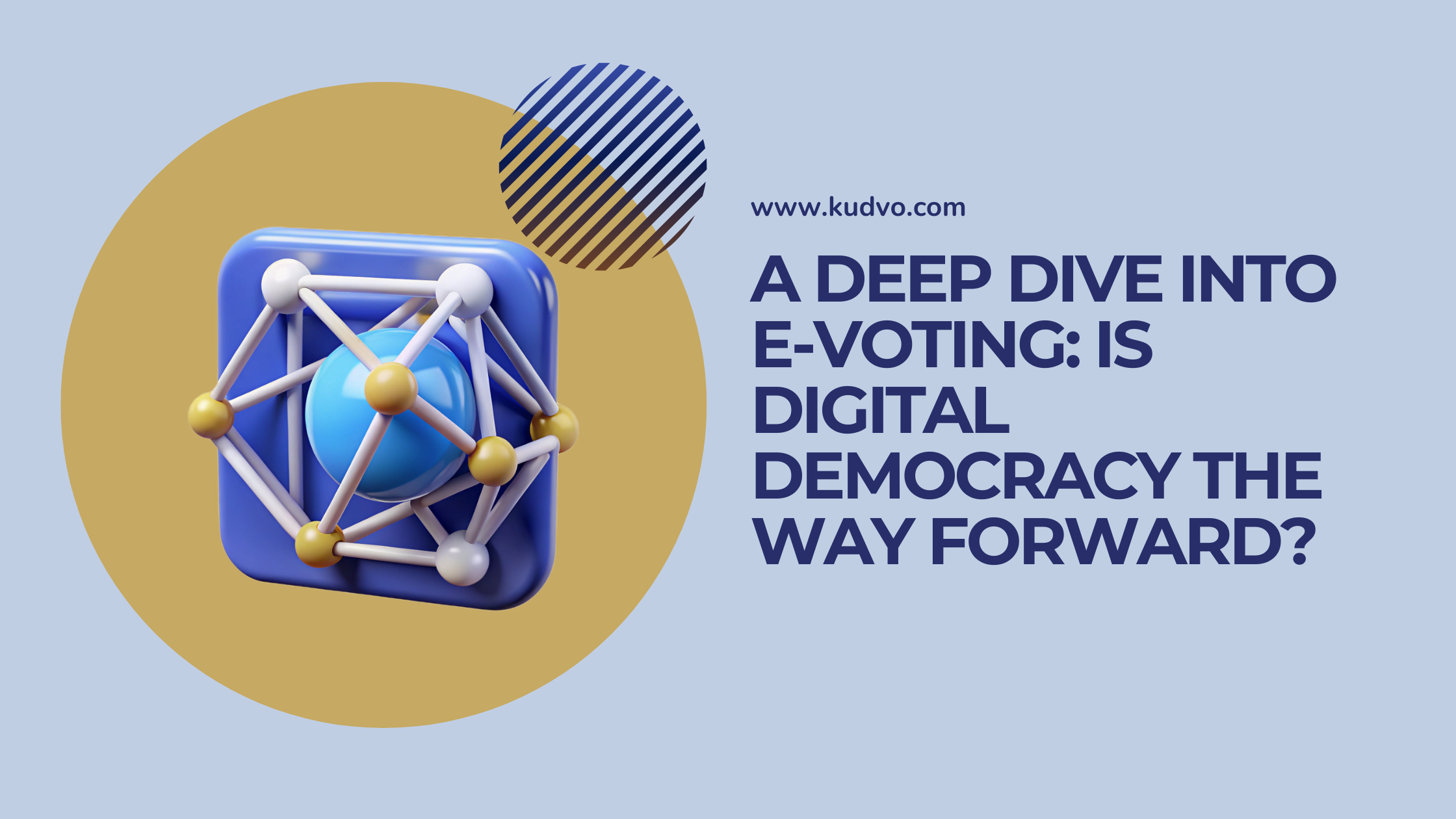A Deep Dive into E-Voting: Is Digital Democracy the Way Forward?
Introduction
Imagine casting your vote with just a few clicks—no lines, no paper, no hassle. Sounds ideal, right?
That’s the promise of e-voting, or electronic voting, a technology that's gaining attention as societies push for more efficient and accessible democratic systems.
With rising voter apathy and logistical challenges in traditional voting systems, countries are turning to digital solutions. But the question remains: Can e-voting truly deliver a secure and trustworthy democratic experience?
In this post, we’ll explore what e-voting is, its benefits and drawbacks, and how it’s playing out in the real world. You’ll come away with a clear understanding of whether digital democracy could be the way forward.
This post is brought to you by www.kudvo.com—your go-to hub for digital innovation insights.
1. What Is E-Voting and Why Does It Matter?
E-voting (electronic voting) refers to the use of electronic systems to cast and count votes. This can take place at polling stations using machines or remotely over the internet.
There are several types of e-voting:
Direct Recording Electronic (DRE) Machines – Used at polling places, voters tap choices on a touchscreen.
Optical Scan Voting Systems – Voters mark paper ballots that are scanned and tallied electronically.
Internet Voting – Allows voting from personal devices like laptops or smartphones.
Why it matters:
In an age of digital transformation, voting systems need to keep up.
E-voting could help increase participation, especially among young voters and those with mobility issues.
It opens up possibilities for faster, more cost-efficient elections.
2. The Pros of E-Voting: Speed, Access, and Engagement
E-voting has some compelling advantages, especially in modern democracies that value efficiency and inclusivity.
✅ Speed and Efficiency
Instant vote tallying means quicker results.
Reduces administrative errors from manual counting.
🌍 Wider Accessibility
Makes voting easier for:
Citizens living abroad
People with disabilities
Rural and remote communities
Potentially increases turnout, particularly among younger, tech-savvy voters.
📱 Engagement Through Convenience
Voting through familiar technology may boost participation.
Encourages civic involvement by lowering the "cost" of voting (time, travel, effort).
♻️ Environmental Impact
Less paper use and fewer physical polling stations = greener elections.
3. The Challenges: Security, Trust, and Digital Divide
While e-voting brings convenience, it also introduces serious concerns.
🔐 Security Risks
Susceptibility to hacking or cyberattacks.
Risks of vote manipulation or system failures.
Example: Switzerland halted e-voting rollout in 2019 after a public test revealed critical flaws.
🛑 Lack of Transparency
Voters may not understand how their votes are processed.
Without a verifiable paper trail, recounts and audits become complex.
🌐 Digital Divide
Not everyone has equal access to technology.
Older generations, low-income populations, and those in rural areas may struggle with online systems.
⚖️ Legal and Ethical Concerns
Questions around data privacy, voter anonymity, and compliance with democratic principles.
4. Global Examples: Who’s Getting It Right?
A few countries have tested or implemented e-voting with varying degrees of success.
🇪🇪 Estonia
The gold standard in internet voting.
Has offered secure, nationwide online voting since 2005.
In 2023, over 50% of voters cast their ballots online.
Uses digital ID cards and blockchain for authentication and vote verification.
🇮🇳 India
Uses electronic voting machines (EVMs) for national elections.
Over 900 million eligible voters use these secure, offline machines.
Combines speed with large-scale reliability.
🇧🇷 Brazil
Fully digitized voting system with biometric authentication.
Known for delivering national results within hours of polls closing.
🇺🇸 United States
E-voting varies by state. Some use DRE machines; others allow limited online voting for military or overseas voters.
Concerns about foreign interference and system vulnerabilities have slowed adoption of full-scale online voting.
Conclusion: Is Digital Democracy the Way Forward?
E-voting presents a powerful vision of the future—one where participation is simple, secure, and scalable. But we’re not quite there yet.
Security, trust, and access remain major roadblocks. Until those are fully addressed, most countries are likely to proceed cautiously, blending traditional methods with modern tools.
The future of democracy may be digital—but only if we get it right.
👉 Want to stay updated on the latest digital innovations in governance and society? Visit www.kudvo.com and explore our expert-driven insights.
